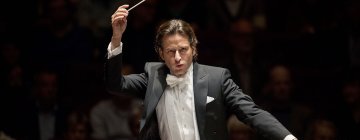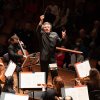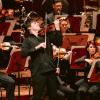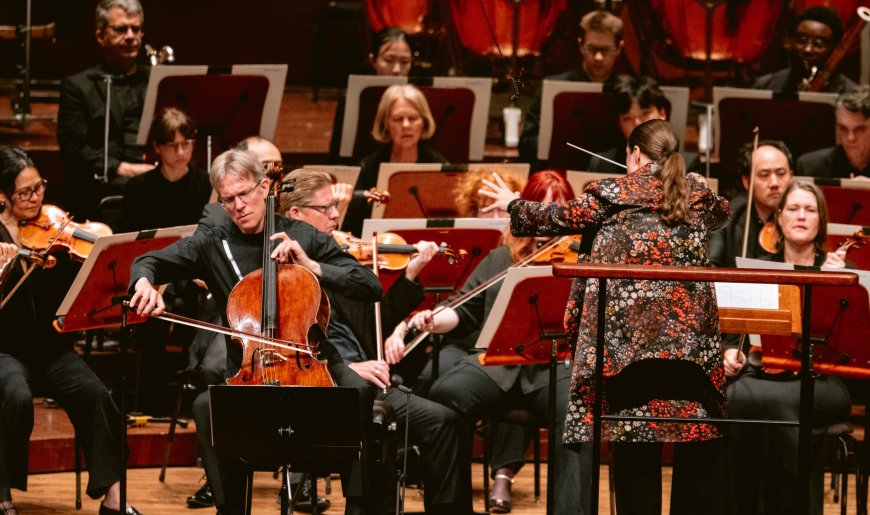
Dalia Stasevska is just the sort of musician who can bring disparate worlds together.
For the Ukrainian-born Finnish conductor’s latest program with the San Francisco Symphony, she juxtaposed two composers who might not initially seem to have much in common. First up was the richly tuneful music of the great symphonist Ralph Vaughan Williams, rooted in the English pastoral tradition and steeped in modal harmonies. Then we heard a world premiere by Icelandic composer Anna Thorvaldsdottir, whose large-scale works seem grounded in a different soil.
But Stasevska made each selection illuminate the other during the first half of the orchestra’s concert on Thursday, May 15, at Davies Symphony Hall.
Thorvaldsdottir’s new cello concerto, Before we fall, is a banger, sonically and intellectually, dense with ideas and meriting repeat hearings. It launches explosively, which is not an unusual strategy for a concerto, but don’t be misled. This isn’t a conventional soloist-versus-orchestra showdown.
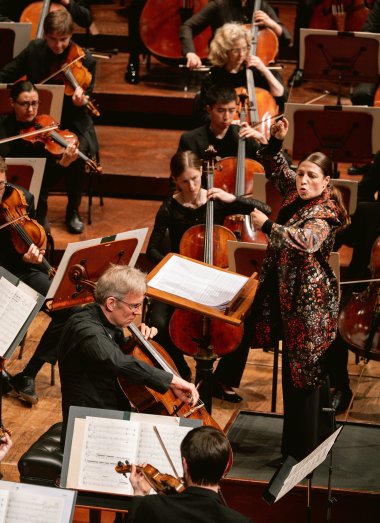
Yes, the cello has its virtuosic flights during the four parts and epilogue of the concerto. And German Canadian cellist Johannes Moser played throughout with both thrilling splendor and fierce intimacy. Yet these dazzling passages seem to arise from, or float over, the depths of the orchestra, negotiating with the ensemble rather than opposing it.
Thorvaldsdottir’s sound world, both delicate and massive, is like no other. She can overwhelm and even frighten with rumbling sonic undercurrents.
A multitude of extended techniques color her orchestration. Keys click, bows clatter on strings, harmonics float through the air. A fabric-muffled bass drum thuds. Every effect emerges from a lavalike stratum of flowing sound. The scoring can fool you into thinking there’s a piano in the orchestra when what you’re actually hearing is a canny combination of percussion, tuba, and rattling lower strings.
Thorvaldsdottir can wield silence as well. She separates the first two parts of Before we fall with a pause specified as seven seconds, releasing the tension while shaking the listener. The concerto opens with an explosion but concludes with a long-breathed question in the cello.
This was just the second of Thorvaldsdottir’s works to be heard on a Symphony subscription program, following Metacosmos, which Music Director Esa-Pekka Salonen conducted in 2019. One hopes that there’s more to come from this gifted composer.
Before we fall and Vaughan Williams’s Fantasia on a Theme by Thomas Tallis intersect in how they layer the orchestra and, more importantly, how they move through time. Though composed for vastly different forces –– Vaughan Williams uses only strings, where Thorvaldsdottir includes winds, brass, and percussion –– both pieces minutely divide up the ensemble to create an enveloping richness of sound.
Vaughan Williams splits his strings into two groups, the second and smaller of which plays at a distance from the first. Within the main orchestra, there’s also a string quartet that provides further contrast. Here, acting associate concertmaster Wyatt Underhill, principal second violin Dan Carlson, principal viola Jonathan Vinocour, and principal cello Rainer Eudeikis played with the sonic beauty and elegant phrasing of a veteran quartet.
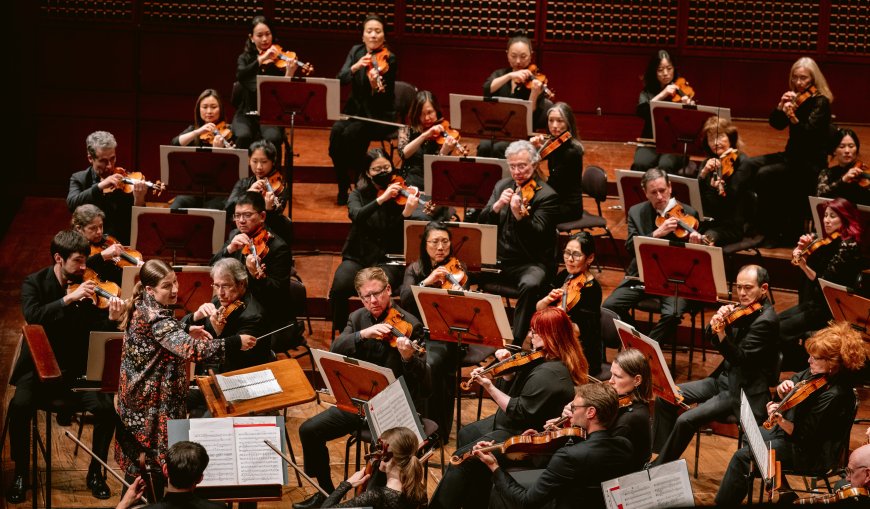
The small, distant group sometimes plays with mutes on, sometimes without much vibrato, contributing an otherworldly sound. The Fantasia has conventional rhythms and meters, unlike Thorvaldsdottir’s concerto, yet in Stasevska’s hands, both works induced a trancelike sense of being outside of time.
Closing out the program was Jean Sibelius’s Symphony No. 5, which was, disappointingly, executed with less success than the concert’s first half. This was even more surprising given how well Stasevska has brought off larger works in her previous appearances at Davies.
Where she conducted in the past with great continuity, this Sibelius performance proceeded in fits and starts. The first movement took off beautifully but lost momentum around the bassoon solo — though Stasevska did maintain much of the music’s grandeur, garnering a smattering of applause at the first break.
The second movement was undeniably charming, but the third confounded, sagging when Stasevska drew out sections of the piece just past their breaking points.
Nonetheless, the orchestra played with noble beauty, and guest principal horn Jeffrey Fair contributed eloquent solos. It’s possible that rehearsing Before we fall cut into preparations for the Sibelius, which might come together better in the two remaining performances through Saturday, May 17.
This story was first published in Datebook in partnership with the San Francisco Chronicle.
